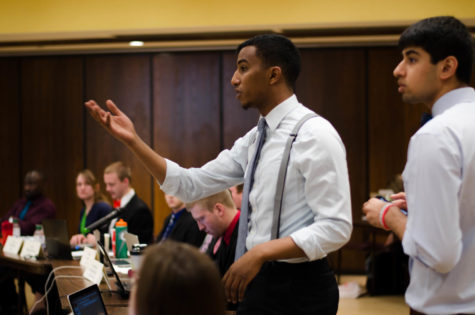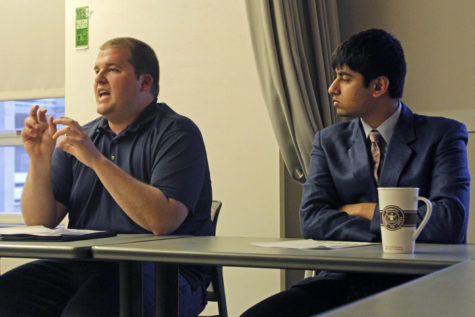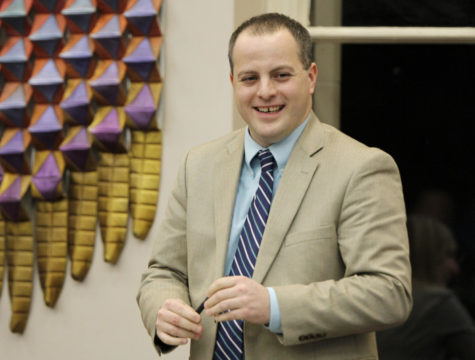Tuition proposal lower than many universities
October 10, 1997
College tuition is on the rise here and throughout the rest of the country.
The originally proposed tuition increase of 3.9 percent for Iowa State University appears to be on the low end compared to other land-grant universities in the nation.
“As far as other institutions are concerned, ISU has always been on the low side of tuition costs and increases,” said Warren Madden, vice president for business and finance at ISU.
Though it may cause some students inconveniences, Madden said it is essential.
He added tuition increases for the fiscal year 1999 are down.
“Tuition has increased as much as 4.6 percent in 1994. In five years, 3.9 percent is on the lower end of the scale,” Madden said.
Although figures for this year are not released until July, the Office of Admissions at the University of Nebraska reported the average tuition increase is 4.7 percent each year.
At Kansas State University, another land-grant university, tuition increased 4 percent for the 1997-98 year, down from a 7 percent hike the previous two years, according to the Office of the Vice President for Administration and Finance.
South Carolina State University, a traditionally black land-grant university, will have tuition increases of 8 percent each year for the next five years, according to their Registrar’s Office.
A recent story that appeared in the Harvard Crimson reported college tuition is steadily increasing across the country on an average of 5 percent each year.
Next week, the state Board of Regents will meet to discuss tuition increases for state universities in Iowa.
Rob Mukerjea, assistant to the president for budget planning and analysis at ISU, said a revised tuition proposal will be made for the fiscal year 1999.
Mukerjea said the Board of Regents look at several sources when considering this proposal, including the Higher Education Price Index
HEPI is an estimate of the cost increase for the university to function from year to year. Mukerjea said a 3.9 percent increase is consistent with HEPI, but others on campus disagree.
“To remain consistent with the inflationary rate, according to HEPI, the tuition should be increased by 2.7 percent,” said Ryan Glanzer, chief of staff for Government of the Student Body.
Glanzer said despite numerous tries, he has received no justification from the Board of Regents as to why the proposed figure is higher than the HEPI indicates. “Raising the tuition to match inflation is justified, but anything beyond that deserves an explanation,” he said.
The tuition increase is a trend affecting universities throughout the nation. Although ISU remains at the lower end of this increase, because of the inflationary rate, there is no way around it, Madden said. “It is a necessary evil,” he said.
GSB is planning several ideas to combat the tuition increase. In addition to petitions from various student organizations, GSB is planning on setting up a booth at this year’s Homecoming events.
“We want some answers,” Glanzer said.
Madden stressed the figure falls within the inflationary rate, which is 2.4 to 4.2 percent. The difference may occur in an extra student aid fund. Although the majority of the money will be used to combat the inflation rate, Madden said money will also be set aside for students.
“A portion of the money will be used to increase student aid,” he said. In that aspect, nothing will change because the tuition increase will be proportionate to the student aid fund.
In addition to HEPI, there is a set of criteria the board will consider. Madden said the criteria covers several areas.
“One factor the board will look at is comparing Iowa State with other comparable institutions, and another is if the percentage of tuition increase is in proportion to the cost of instruction,” he said.
In both cases, Madden said, the 3.9 percent increase is consistent.









